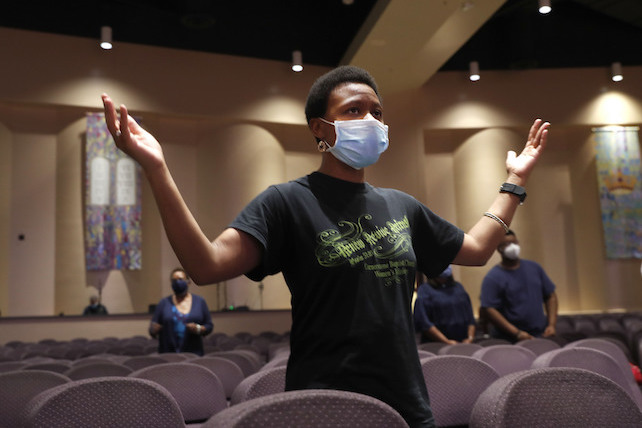(RNS) — The people who worship at First Baptist Church in Maury City, Tennessee, have been exemplary during the long months of the COVID-19 pandemic.
The rural West Tennessee church’s members readily embraced online services, sometimes watching over and over so they could sing along with the music. When in-person services resumed over the summer, they wore their masks and socially distanced in the pews.
But what might have surprised First Baptist’s pastor, the Rev. Mike Waddey, most is that his congregation has kept giving despite all the changes the pandemic brought.
“I probably sold our people short,” said Waddey. “I thought they would not give if they were not in the building. Shame on me for that.”
Waddey is not the only pastor to be pleasantly surprised, according to a new study from the Lake Institute on Faith and Giving at Indiana University-Purdue University Indianapolis.
David King, director of the Lake Institute, said the institute surveyed 555 congregations for the study, mostly from a wide range of Christian traditions, along with a few Jewish and Muslim groups.
While not a representative sample, he said, the study gives a snapshot of how congregations have fared during the COVID-19.
Most have done pretty well, with both participation and finances holding steady.
About half (52%) have seen more people participating during the pandemic. At more than half, giving has remained the same or increased, while 41% of congregations say giving has gone down. Only 14% have had to cut or furlough staff, in part because many congregations (65%) had received a Payroll Protection Program loan from the Small Business Administration.
King said he was surprised by how well congregations adapted during the pandemic, especially in the early days last spring.
“Congregations really buckled down and did amazing work, quickly pivoting to online services and responding in a lot of creative ways,” he said.
Churches have also cut costs, according to the study, while trying to keep essential ministries going. Just over a third of congregations (38%) reported cutting nonpersonnel expenses during the pandemic. About 1 in 10 reduced giving to their denomination (12%), drew from reserves (10%) or cut funding for missions and benevolence projects (8 percent).
Congregations have also reached out to others in need.
Three in 10 of congregations in the study say they gave financial support to other churches, while nearly a quarter (22%) created a fund to aid congregation members in need.

